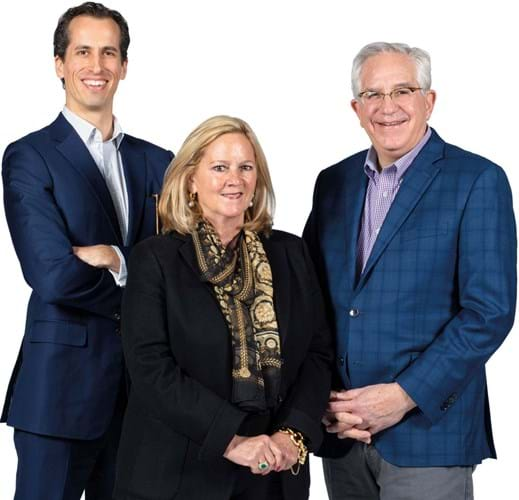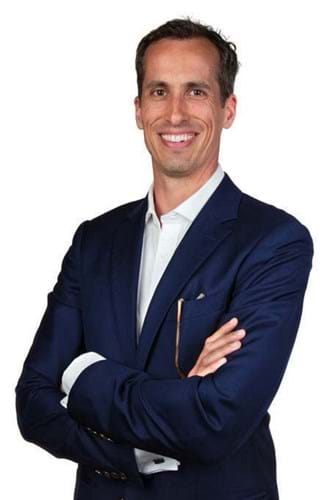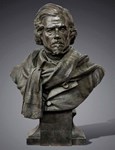For several years now, the world’s major auction houses have focused serious attention on the middle market. This has involved acquiring e-commerce platforms and building lower-cost timed online sales in categories such as prints, photographs, decorative objects and 20th century design.
As a public company, Sotheby’s has been the most visible in targeting a market it defines as $5000-1m. In 2017 the firm hired senior e-commerce talent from the retail sector and in 2018 acquired an online decorative objects marketplace, Viyet.com, renaming it Sotheby’s Home.
Where the big guns go, ambitious mid-tier auction houses find the funds and follow.
Step forward Leslie Hindman Auctioneers, which rebranded as Hindman in May after a year of restructuring and acquisition.
The firm, founded in 1982 by Leslie Hindman, is no newcomer to the middle market, however.
That fact became clear during ATG’s recent visit to the firm’s headquarters, located in a trendy former meatpacking district on the edge of downtown Chicago.
Proudly displayed on the reception area’s white walls were images of jewellery, furniture, manuscripts and fine art lots sold by Hindman with hammer prices ranging from $60,000 to more than $1m.
“I know mid-market is all the vogue right now, but as a company we have been mid-market-focused for 37 years,” said Thomas Galbraith, the firm’s British-born chief executive since June 2018.
Galbraith, a former managing director of online auction house Paddle8 and art market analyst, has spent a whirlwind year in the job.
The past 12 months have included the sale of a stake in Hindman to a private equity firm to help accelerate its growth and in particular, the auction house’s digital strategy.
Ten locations
From the firm’s own coffers came the funds to acquire, late in 2018, Cincinnati auction house Cowan’s, specialist in American Indian and ethnographic, decorative arts, firearms and militaria, as well as Modern and Contemporary art.
That deal means Hindman now has a big physical footprint that goes way beyond the Mid-West, with offices in 10 locations: Atlanta, Cincinnati, Cleveland, Denver, Milwaukee, Naples, Palm Beach, Scottsdale, St Louis as well as Chicago. Such expanse is a far cry from the firm’s roots as a Chicago start-up by former Sotheby’s auctioneer Leslie Hindman, who in 1982 made good on her conviction that America’s third-largest metropolitan area deserved its own auction house.
“We are looking to be the premier mid-market auction house in America: Thomas Galbraith, CEO, Hindman
Leslie remains on board as co-chair with Cowan’s founder, Wes Cowan, as vice-chairman, but strategy is driven by Galbraith and his executives. That team includes a chief technology officer, hired in 2018 to steer Hindman’s digital drive.
As ATG sat down with Galbraith – whose accent remains distinctly English despite emigrating to the US after university – we were keen to hear how Hindman, which runs more than 100 auctions a year, plans to evolve its clicks-and-mortar strategy in the world’s largest art market.
ATG: Why rebrand such a well-known name in the auctioneering world?
Thomas Galbraith: It’s important to signal to the broader market where we are headed and where we came from. So, in a succinct fashion, we’ve done this with a rebrand and a minor name change.
We switched back to the colour green that was the original Leslie Hindman brand colour. It’s very important to respect Leslie’s achievement – to have set up an auction house at a time when female-led organisations in the art market, let alone in industry were very rare.
As for our goals, we are looking to be the premier mid-market auction house in America – to be the best we can be, in a given segment and give our clients a better experience by improving our technology and being physically present in the markets.
How do you define mid-market?
Everyone defines it differently – there seems to be no consensus on what mid-market means. Sotheby’s and Christie’s tend not to look at pieces below $5000 and that has changed over the years.
We are best serving our clients at the $500 to $1m range – for us that’s middle market.
If you look at that range on a volume basis, it’s near on 85% of the market and on a value basis, it’s 40-50% of the market.
If someone comes to us with a $50m Mark Rothko, I will introduce them to Sotheby’s and take a referral fee. We’re not in a position to compete with Sotheby’s and Christie’s.
Yet we want to deliver a great experience where clients feel we’ve done everything to make their transaction as seamless as possible, to have a fantastic online experience and/or offline experience.
What does that mean in practice?
We have a renewed emphasis on providing clients with multiple sales channels including private sales and we are also looking at a buy-now option.
Buy-now is not happening yet but we are looking to accelerate that as best we can. Some clients only want to transact privately or at auction or in a retail capacity. It’s important to be flexible.
What do you think of Christie’s recent link-up with 1stdibs on buy-it-now?
It’s a great idea. Christie’s has generally experimented by itself, whereas Sotheby’s has been happy to partner – and that’s a wiser strategy. I am sure the Christie’s-1stdibs venture will be successful.
How else will clients get a better online experience at Hindman?
We have a proprietary platform called Gavelizer, designed to make us more efficient for clients. For instance, we do appraisals of items and historically our system was incapable of handling those appraisals – everything had to be done in Excel, which is a huge volume of work.
What’s your view of the aggregator platforms you partner with?
I believe, at this point in time, that aggregators have a real and meaningful role. We will continue using them as we always have, working with partners who deliver as many buyers to us as possible.
We are looking at hosting our own timed online auctions alongside using portals. I don’t think the two have to be mutually exclusive but third parties will have to evolve their offering.
They need to move with the market and have a valid proposition, and as each auction house builds their own bidder base, they have to re-evaluate what they offer clients.
In what way?
It’s a symbiotic relationship. Right now, there are data elements – underbidder information, who’s viewed lots, and so on – we do not gather when we’re on a third-party platform.
Being an underbidder is tremendously frustrating. You get zero communication from the auction house afterwards. If we had underbidder information, we could sell them related items via an immediate outreach afterwards – often at times people are interested in making that purchase.
What commission do you charge bidders who come to you via portals?
At the moment, we charge online bidders a 1% fee and absorb the 2% ourselves. We’re one of the few auction houses that doesn’t pass on the 3%.
How do you balance having salerooms in several US cities with increasing your digital presence?
I learned at Paddle8 that being on the ground is phenomenally powerful – if you have an office in a location in a community you’re trying to serve, you’re changing the dynamic.
So, a big part of our ongoing effort is local engagement – playing a bigger role in all the cities we’re present in and tapping into that ‘buy local’ movement. We’re bridging that gap: a national player that is locally connected.
Is a New York presence on the cards? Or LA?
If the right opportunity presents itself, we may end up in either of those cities. However, we do not have immediate plans to do so.
You had an Anish Kapoor sculpture in your most recent Contemporary and Post-War sale. Will you focus more on that level of Contemporary art?
When we were developing the aesthetic of the Chicago office, it was as a venue for luxury and great service. It’s a difficult thing to balance. When you look at the Phillips of this world, people end up inferring Contemporary from luxury and vice versa.
We want to serve as broad a collector base as possible. We have great books, firearms and fine art departments, and jewellery is a cornerstone of our business, knowing that all of this is discretionary spend on beautiful, enjoyable objects.
We’ve dabbled with most segments. The ‘collectables’ space, including comic books and entertainment, is growing and is one in which we currently don’t operate. But right now, our primary focus is on the fundamentals.
Thomas Galbraith factfile
Hails from: Ingatestone, Essex, England
2004: University of St Andrews, Scotland. MA in art history
2004-06: Art Loss Register, New York
2007-10: AXA Art Insurance Group, New York – art market expert, part of a two-person team establishing Canadian presence
2010-13: Artnet AG, New York – director of global strategy.
2013-16: Paddle8, New York – managing director, auctions
2010-present: Petraeus Group, New York – co-founded consulting firm the Petraeus Group in 2010, with clients including Art Basel, Artnet and Paddle8
2017-18: Twyla, Austin, Texas – interim CEO at Google Ventures-funded Contemporary art site Twyla
2018-present: Hindman Auctions, Chicago – joins Leslie Hindman Auctioneers as CEO, taking over from Leslie Hindman as she moves to become co-chair, to restructure and relaunch the firm.
















